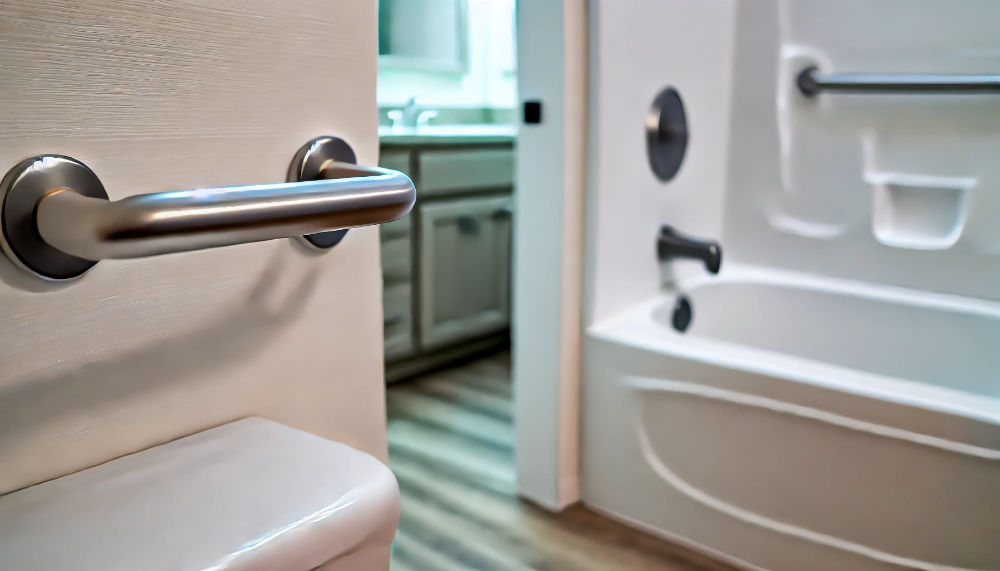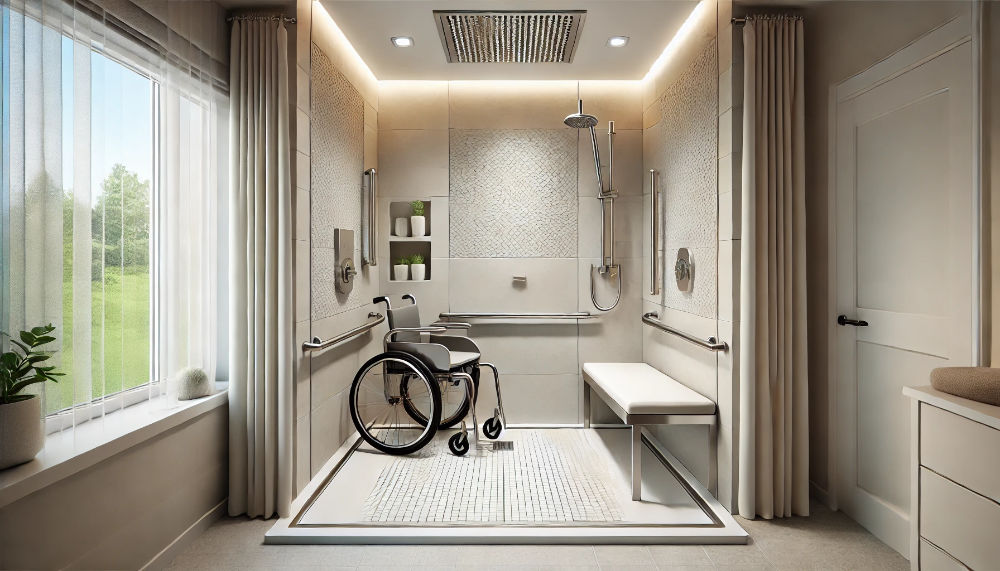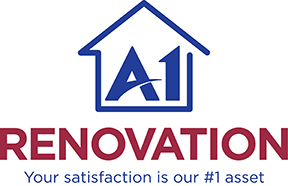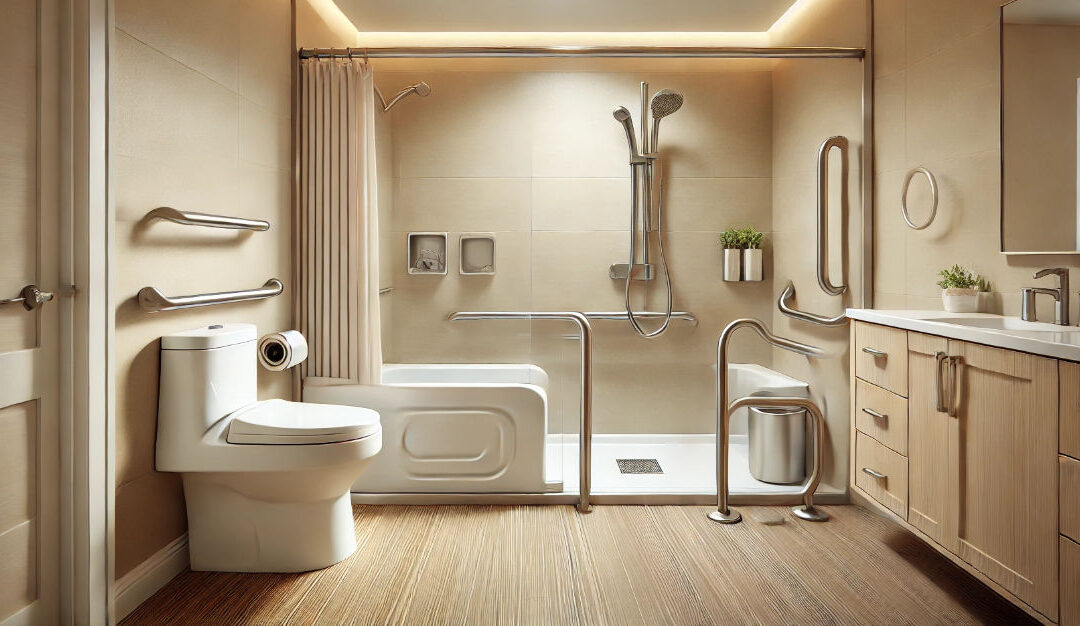“Aging in place” is a choice that’s becoming more and more popular for seniors — especially with the surging real estate prices of the last few years. In fact, a recent AARP survey showed that 77% of folks over age 50 plan to stay in their current homes throughout retirement.
Essentially, this refers to upgrades and remodels you can make to your home to make it easier and safer to live in as your mobility decreases. In today’s post, we’ll delve into the different types of remodels you can made to do this, and explain how those things help your home remain comfortable throughout life.
Bathroom Modifications for Aging in Place

Grab Handles For Bath Tubs and Toilets
These handles are usually made of durable steel, which is smooth and comfortable to hold and can support a person’s full weight. These handles are placed in areas where you’ll probably be sitting down and then standing up, or stepping over something — such as the edge of a tub to enter the shower.
Installing grab bars involves securely mounting them into the wall studs for maximum support. This ensures they can bear weight if someone leans on or pulls on the handles to stand up. Depending on the bathroom’s layout, professional installers may need to cut through tile or drywall to ensure the grab bars are properly anchored.

Walk-In Tubs & Roll-In Showers
Walk-in bathtubs have a door that allows users to enter without having to step over a high tub wall, reducing the risk of tripping. Once inside, the door seals to prevent water from leaking, and the user can sit comfortably while bathing.
Roll-in showers, on the other hand, feature no threshold, making them wheelchair-accessible. They often include built-in seating and handheld shower heads for easier bathing.
Installing a walk-in bathtub requires removing the existing bathtub and retrofitting the plumbing and electrical systems (for whirlpool or heated options). These tubs may require a larger footprint than standard bathtubs, so space adjustments may be necessary. Your remodeling contractor will let you know as they assess your bathroom space.
Roll-in showers involve removing any existing shower enclosure, flattening or slightly sloping the floor for proper drainage, and often re-tiling the shower area to ensure it’s slip-resistant. Waterproofing is critical to avoid mold or deterioration of nearby walls and floors.
Raised Toilets
Also called “comfort height toilets,” these toilets sit a couple inches higher than a standard toilet. The idea here is that it doesn’t require a person to lean as far to sit down, and the elevated position is also easier to stand up from because the knees aren’t bent as far.
The installation process is fairly straightforward and includes turning off the water, removing the old toilet, adjusting the plumbing if necessary, and installing the new, taller unit. Some homeowners opt for a toilet riser or seat extender, which can be added to an existing toilet instead of fully replacing it. For a more permanent solution, though, replacing the toilet is ideal.

Non-Slip Flooring
Non-slip materials provide more grip for bare feet and shoes, even wet. That’s a big plus in a bathroom where splashes from a sink or shower onto the floor could otherwise create a slipping hazard. For someone who already has some mobility challenges, a wet floor could be especially dangerous.
Popular choices include:
- Non-slip ceramic or porcelain tiles that have a textured surface
- Rubber flooring that offers extra cushioning
- Vinyl flooring with a textured finish.
It’s also important to use non-slip mats or coatings for additional safety in wet areas like the shower or near the sink.
Lever Faucets & Height-Adjustable Shower Heads
Lever faucets are much easier to adjust than typical twist-style faucets. Lever faucets don’t require a tight grip or much wrist motion to operate — just a gentle push or pull. This can be quite helpful for those with arthritis, or who have suffered a wrist injury.
Shower heads with adjustable height allow for easier positioning. These pair well with roll-in showers for people taking a shower in a wheelchair. The roll-in design allows for easy entry, and the adjustable height shower head can be lowered to provide better bathing for a seated position.
This also means the shower can be shared with others who still intend to stand in the shower, since the shower head can adjust to a height for everyone.
Widening Doorways
The standard doorway can be restrictive for wheelchairs and walkers, and widening them can make entry far easier. These type of mobility remodels are common for bathroom doorways, kitchen entryways, and front door entry. In the case of the front door, it’s especially helpful when paired with a wheelchair ramp.
Financing Options For Aging In Place-Style Remodels
Home equity loans are an option, where an individual is borrowing against the equity they have in their home to make the improvements. These types of loans are often for this purpose — to make improvements to the home.
Various government programs can also assist with mobility remodels:
- The HUD 203(k) essentially rolls the mortgage and the cost of remodeling upgrades into one loan. This is of course mainly valuable if you are buying a new home that needs these upgrades and less so if you’re already in the home.
- The Veterans Specially Adapted Housing Grant (SAH) allows a qualifying veteran to purchase or upgrade a home to accommodate disabilities and other mobility challenges. Generally the government will grant up to around $109,000 in allowable upgrades, and the bathroom upgrades we mentioned above are covered.
- The Veterans Special Housing Adaptation (SHA) program is very similar to the SAH alternative, but is for those who don’t qualify for the full coverage of the earlier option. Generally (as of 2024) it will provide up to $22,000 of coverage for mobility related upgrades
- The Home Improvement and Structural Alterations Grant is another alternative for veterans who have developed mobility challenges that weren’t related to their military service. Upgrades it covers are very similar, but coverage is limited to $2000. This is more to help with paying for the remodel rather than covering them outright.
- Medicaid Home and Community Based Services (MCBS) Waivers program is provided by Medicaid for seniors who wish to remain in their homes rather than go to a nursing home. It covers similar upgrades such as grab rails and walk-in showers, and aspects of it can also help cover meal delivery.
Call us today to schedule a consult for your next remodel project — we’ll review costs and can optionally help create a plan of action for you so you’ll know exactly which steps to take and what your options are.


